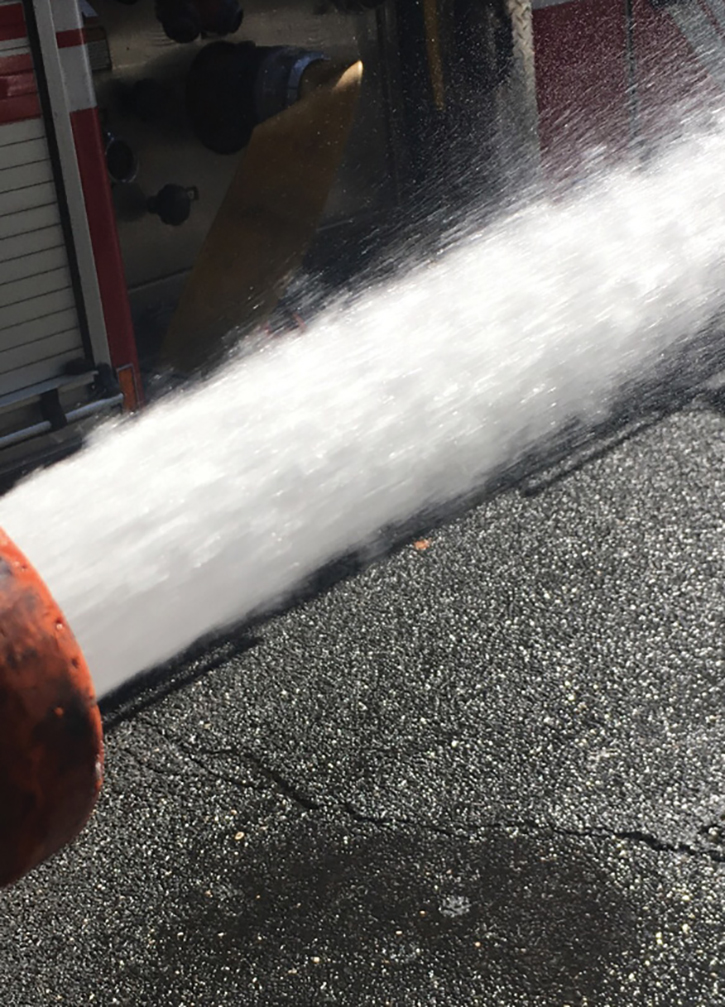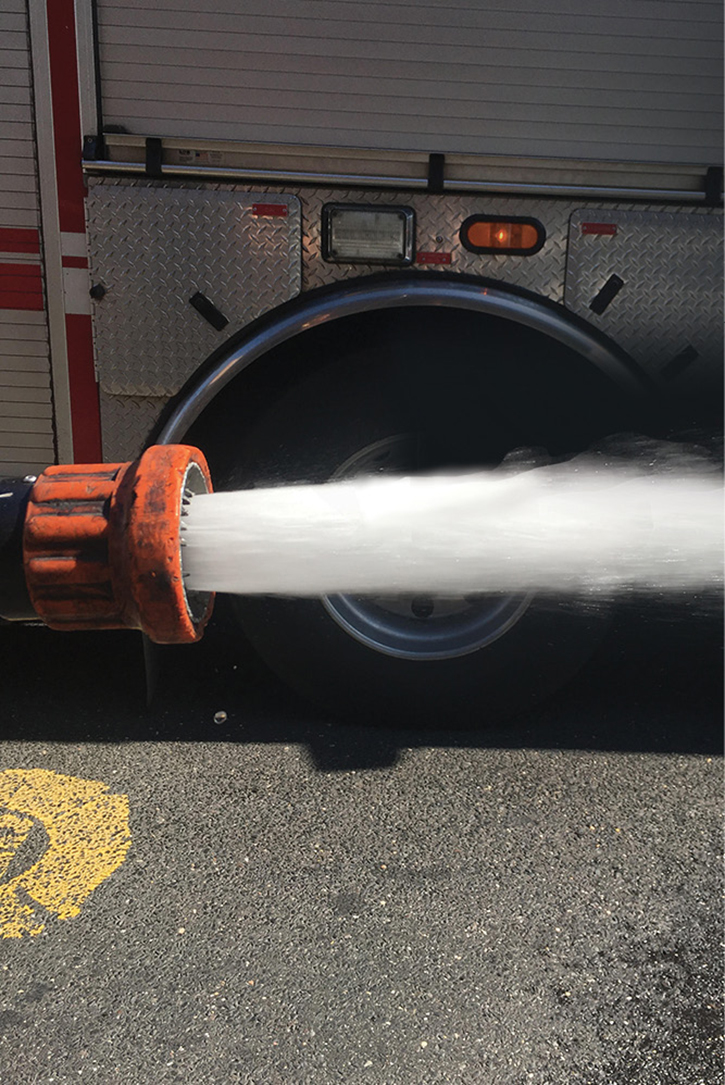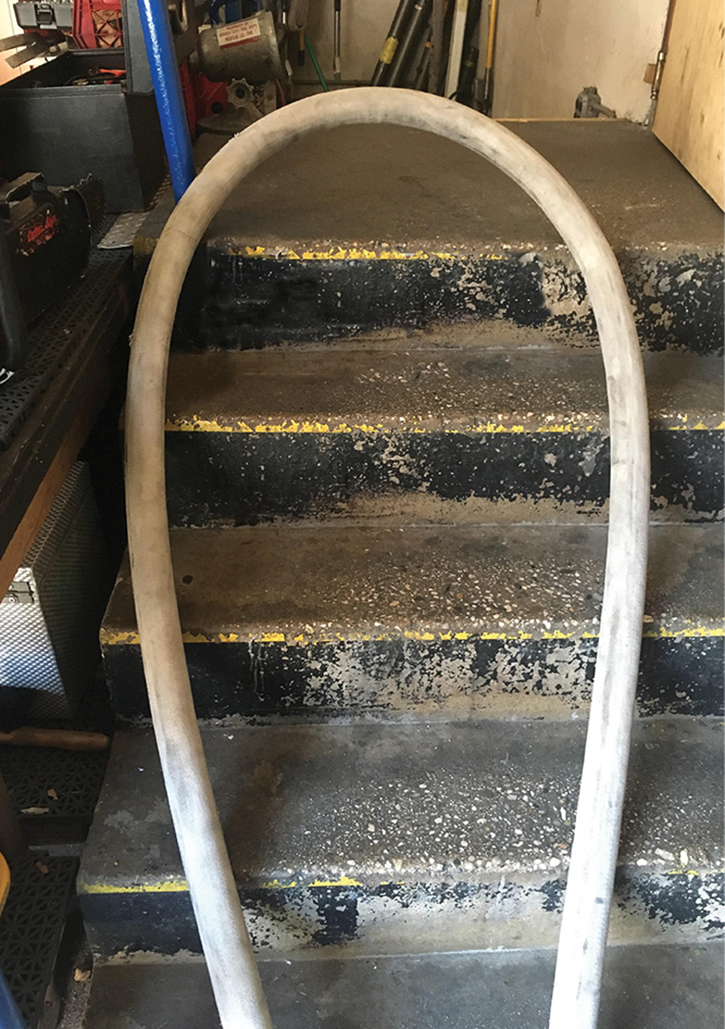
There is always a lot of speculation about discharge flows, friction loss, “excessive” stretches, and pump capabilities. Generally, these conversations revolve around friction loss calculations, hose diameter, required pressure for tip size, and the like. The result, at least in my experience, is a pump chauffeur at a pump panel during a large-scale fire with his head spinning. Between broken gauges, different sizes of hoses of different lengths and with different tips, and the radio blaring “more pressure,” the chauffeur does not know which way to lean without putting his pump into cavitation.
RELATED TRAINING
Loss of Water: Every Engine Chauffeur’s Nightmare
Every Pump Operator’s Basic Equation
Modern Day Pump Operators: Doing More with Less
Fireground Pump Operations: Mastering the Panel
Rather than tackle any of these sizable issues—for real-life circumstance will never abate them and it would be presumptive of me to do so—I’ll focus on the smaller things we can do on the inside, on the line, that can help determine our flow and tell us if we have a quality, maneuverable, optimal stream. Aided by these clues, the pump chauffeur on the outside is helped with the required “calculations.” If you know the stream you are working with, you can widen or narrow the scope within which your pumper can operate additional lines. We’ll never change hydraulics, but we can manipulate its rules.

(1) Photos by author.
Is the stream penetrating and suppressing? This is an obvious clue and perhaps the biggest. Picture yourself with a 1¾-inch line at a double-door entrance to a burning dining room, hall, and kitchen. The rear windows have failed, and the fire needs the push of the line to get itself out the windows. When the line is opened, it should almost look like the fire is “running away” from the stream. At least, that’s the way I have always seen it. An adequate, modest 150 gallons per minute (gpm) or so should accomplish this with no problem (photo 1). We have all said, “Wow, it sure went out fast” or “It sure doesn’t take much.” However, I’m sure we have all at one time or another opened a weak stream on an involved area.
Don’t confuse this with too much fire for the single line; although the stream looks adequate and has some weight to it, the fire seems to wrap around the stream. Or, occasionally, the fire darkens in a small area and immediately returns when the line is moved. This should not happen in a well-ventilated, modest compartment fire. You must be able to accurately tell how quickly and how much fire a good stream will suppress while you are working, aside from a book chart that says, “3-4 rooms of knockdown … 1 floor of knockdown ….” You need to judge the fire size, anticipate possible other causes, chase the kinks, and so forth, and then consider calling for more pressure. The member at the panel just needs to know that he has to increase the pressure, not a specific number.
Is the team being unduly punished? Engine members get beat up; that’s the way it is. But if you know that you have a standardized approach of sorts and everyone is doing everything correctly, barring the presence of accelerants or hidden fire, the feel of “the push” should be pretty constant. If your crew is first in, this is where you want your strongest stream. If you are opening and plugging along but are taking a severe beating doing so, regardless of the type of residence, you need more ventilation or more water.
On the line, your control over immediate ventilation is limited at best, but you are literally tied to water output. If you encounter more heat and have a slower knockdown than anticipated, again, more pressure may be the call. With a call from the inside, you have as much authority over that pump’s output as the engineer.
Ensure the nozzleman has the bail fully opened. Time and again, you will see a nozzle half-opened for ease of operation. Although in other situations this may be all right, it is not when first putting water on fire. If this is the issue, open the bail fully and gauge the response.
Nozzle reaction and pliability. Whether you are flowing a combination nozzle that “requires” 100 pounds per square inch (psi) at the tip or a smooth bore that requires 50 psi, after some time, the “feel” of a good stream becomes second nature. Nozzle reaction for a smooth bore is a little more manageable, until you start to crest a pressure ceiling. As promised, without giving numbers, once a smooth bore is overpressurized, there is little forgiveness and the nozzle reaction goes up exponentially and overtakes that of a combination.
If the line is not pushing back, it’s not throwing enough water. You may have a decent looking stream, perhaps one that is fairly linear, but it’s not good enough. And, with today’s fire loads, continually operating with a line like this is a mistake: Waiting for a savior from another line is costly, and backing out is unacceptable. If you are on the nozzle, you need to recognize this as soon as the stream opens and communicate back so that the team can radio the engineer and help him out. It should be cumbersome but not overwhelming.
Pliability. This indicates adequate pressure that you can see without opening the line. Small and mid-diameter lines should be firm but not wholly rigid. If you give a 1¾-inch line a wide-angled turn around a bend, perhaps along the base of a wall, and it automatically flexes itself straight again, there is a good chance that the line is overpressurized. The line should make bends easily without creasing. The jacket should maintain its form on turns, around stair bends, and over banisters and be ox-bowed along walls (photo 2). If you notice easy creasing as you stretch in, anticipate that the stream will be weak (photo 3). Be ready for it.
If the line is overly rigid or rock-like, bear down and dig in when you get ready to open up because it may be overpressurized. While opening the line, have a partner directly behind you, but this is not always feasible. Alternatively, brace yourself against a wall, kitchen island, sofa, or windowsill.
Another good measure is the “arm’s length” test. With the line in a good attack position, about an arm’s length ahead of you, it should not sag much. When you open it, it shouldn’t sag at all. If it does, it’s weak, so let someone know.
Atmosphere. Similar to the speed with which the fire is knocked down, how much the stream is disrupting and pushing out the atmosphere is a clue of the stream’s status. For example, in fog-venting, whether using it postknockdown or to gain bearings, if the stream does not quickly entrain smoke and heat, you can probably do a little better. A smooth bore tip supposedly does not disrupt the thermal balance as much as a combination nozzle, but an attack should push the atmosphere. In short, the fire stream should push the atmosphere over you, onto you in some cases, and then you should feel relief. The feel should be brief: It gets a little worse before it gets better. Be aware of this.

(2)

(3)
If the heat level is stagnating or lifting too slowly, you need a more powerful stream or more ventilation or there is more fire area than you think. If you have eliminated most causes and the atmosphere is still punishing you, call for more water. You can anticipate this need somewhat beforehand; a hoarder apartment vs. a vacant one feels distinctly different. A contents-and-wall fire will not be as oppressive as one in a long hallway with limited windows. Be ready to make the call for the best stream that the situation requires.
Tertiary stream capability. In addition to knockdown efficiency, any adequate hose stream should accomplish some other tasks readily. If these things are slowed or not accomplished at all, the stream needs some strengthening. With joist, stud, and window trimming, a good stream should be able to trim these nicely, blasting off charred wood and loose debris, and even penetrate spliced portions. The line should easily push out embers and char and ensure that pocketed portions are deeply soaked.

(4)
If your stream is just “wetting” the area, it’s not good enough. With ceiling and attic spaces, a good stream should have no problem blasting out all insulation, thus saving the truck team some effort. Insulation, wet wallboard, and such should be no match for an adequately pressurized stream. Again, no numbers. If your stream accomplishes this feat easily, it’s good enough. You don’t have to be able to strip the paint off the walls but, again, some force is needed. Some other examples include easily breaking drop tile, blasting off shingles when the stream is angled in a direction opposite them, getting under roofing material easily, penetrating the width and length of mattresses and auto seat cushions without a problem, and easily forcing the heavy atmosphere of a car fire away from itself regardless of wind condition.
The stream itself. Watching the stream can tell quite a bit; picking up the clues it offers can help the operator at the panel. A straight stream should not be breaking up along its length and fragmenting. If it’s breaking or losing volume along its length, it’s probably not at optimal pressure. If it is “spitting” back at you from the nozzle tip, it means water cannot get out fast enough; it’s overpressurized. Often, a sideways “X” stream accompanies this. A smooth bore stream should lose none of its volume along its length; if you see this over short stream distance, the pressure is not enough. A spitting, machine-gun flow from the tip is from the water bouncing off itself trying to get out—too much pressure against the baffle (photo 4).
But the best indicator is you. What can your team handle? Is the fire going out quickly? Can you move this line easily? Whether the stream is producing the desired effect determines whether you need to call for more water/less water. All else is supplemental.
Almost as important, let the outside members know when the fire is darkened down in your area. The member at the gates may very well be about to charge another line and hesitate. If you can supply those precious psi from the inside, do it. Things happen so quickly that if you can get ahead of some of these problems, you allow the operator at the panel to overcome them. Numbers are great, but don’t let them paint the engineer into a corner. He should be able to loosely follow the guidelines: Engage the pump, drop the tank, hook up, pull the gate, and wait. Additional water from accompanying lines needs to be considered and acknowledged. Suppression lay with a concerted effort and communication.
Make no mistake: Selection on arrival is paramount. No amount of feedback or information from the line itself will make up for selecting too small a line. That said, calculated, not frenzied, communication by way of observation on the inside is a crucial but often overlooked part of pump operations.
ALEXANDER DEGNAN is a captain in Squad Co. 4 of the Jersey City (NJ) Fire Department, where he has served since 2005. Squad 4 is an engine company assigned to the 4th Battalion and responds to fire assignments as an engine.

